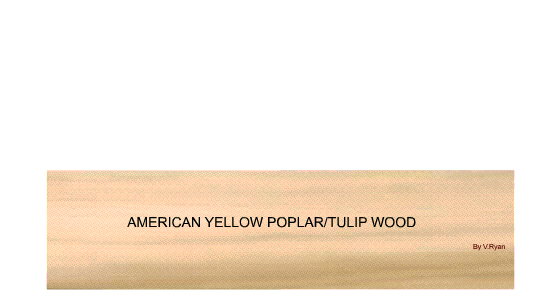| CLICK HERE FOR INDEX PAGE | |
| AMERICAN YELLOW POPLAR/TULIPWOOD | |
| V. Ryan © 2008 | |
| Liriodendron tulipifera Family: Magnoliaceae Commercial names: Poplar, Canary Wood, Canary Whitewood, Yellow Poplar, Hickory Poplar, Tulip Poplar, Saddletree, Popple, Tulipwood (USA); Tulip Tree (USA, Canada and UK); American Whitewood (UK). Distribution: Eastern USA and Canada and introduced into Europe. |
|
 |
|
|
General Description: In second growth trees the
sapwood is very wide, whitish in colour and streaked. It is sharply
defined from the heartwood which varies from pale yellowish-brown to pale
olive brown streaked with olive green, dark grey or pinkish-brown, and
when mineral stained, streaks of steel blue. Uniform, straight grain;
regular, fine texture. Weight 510 kg/m3 (31 lb/ft3); specific gravity
0.51. |
|
| CLICK HERE FOR NATURAL WOODS IN DETAIL | |
| CLICK HERE FOR RESISTANT MATERIALS INDEX PAGE | |